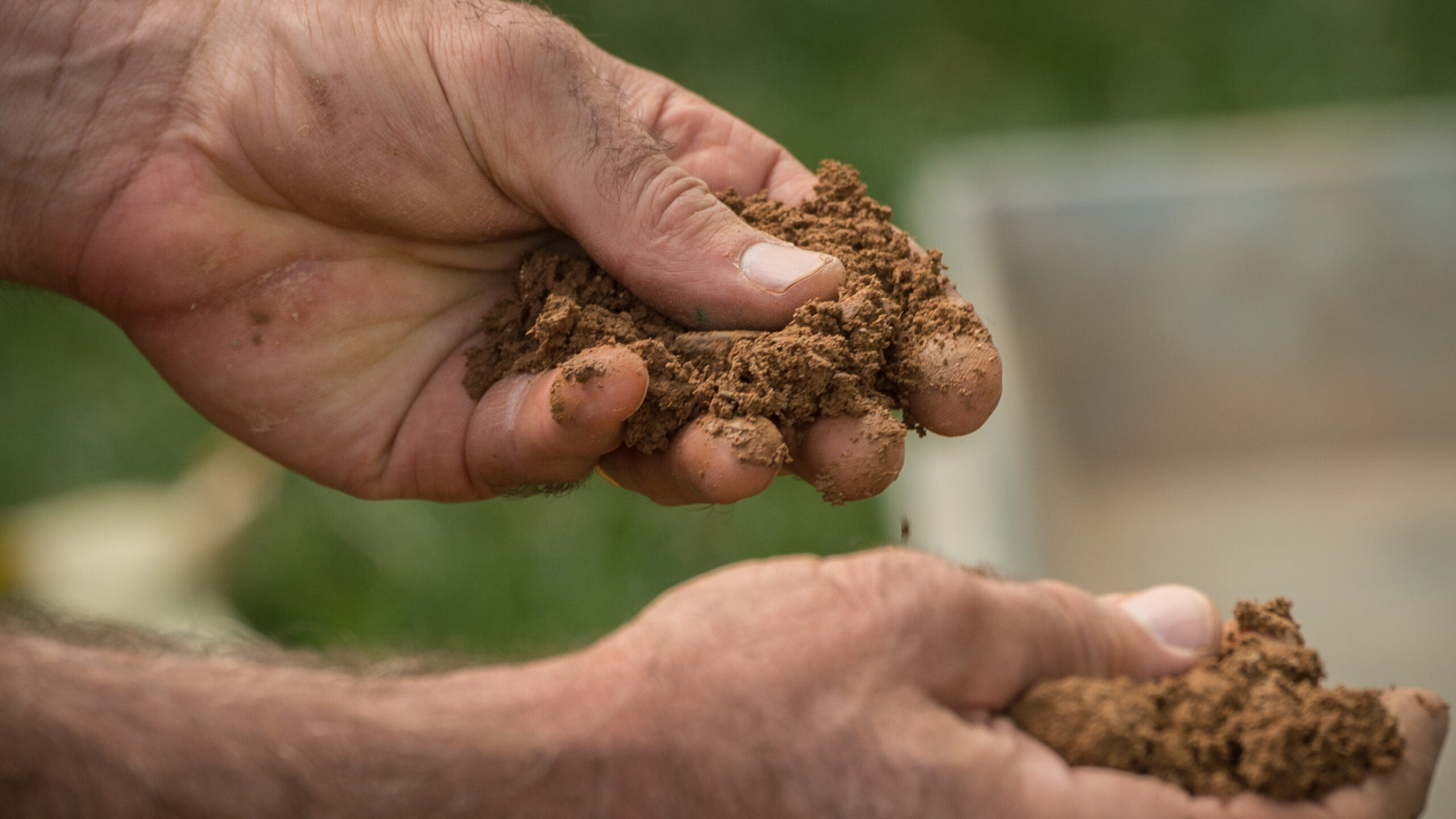Stu Schwartz, senior research scientist for the Center for Urban Environmental Research and Education (CUERE) at UMBC, has long looked with concern at the issue of soil compaction and its effect on stormwater runoff and infiltration. Impervious surfaces, such as roofs, roads, and parking lots, increase stormwater runoff and pollutants in streams and rivers. Schwartz and his students found that standard construction practices can routinely result in green permeable landscapes with compacted soil profiles that produce almost as much runoff as an impervious road or parking lot.
Looking for a better way to create sustainable, attractive landscaping, he dug into the problem of compacted soil and began collaborating with various government agencies to address these issues.
Schwartz and his students worked with the Maryland Department of Transportation State Highway Administration’s Office of Environmental Design to demonstrate and refine an alternative to standard topsoiling practices that are commonly used by contractors. The technique—suburban subsoiling—makes the soil less compact and incorporates rich, organic compost into the soil to restore infiltration and water-holding capacity.
This practice needs little to no ongoing irrigation and fertilizer input, functions well technically, and has the markers of commercial success. It can be implemented with relatively minor changes to standard land development practices, and holds great promise as a win-win technology to reduce stormwater runoff while delivering superior sustainable landscaping.
The American Association of State Highway and Transportation Officials (AASHTO) recently identified this innovation as one of 2016’s “Sweet 16” projects. AASHTO’s “Sweet 16” distinction annually recognizes four high value projects from each geographic region of the United States.
In applying the suburban subsoiling technique, Schwartz and his students have worked with the City of Baltimore and Yorkwood Elementary School. The collaboration aims to reduce the amount of asphalt covering the ground and create construction that can allow the ground to absorb more water. Schwartz’s team developed an alternative way to restore the sustainability profile of the soil after the asphalt was removed and replaced with grass.
Photo by U.S. Department of Agriculture. CC by 2.0.
Tags: CUERE

